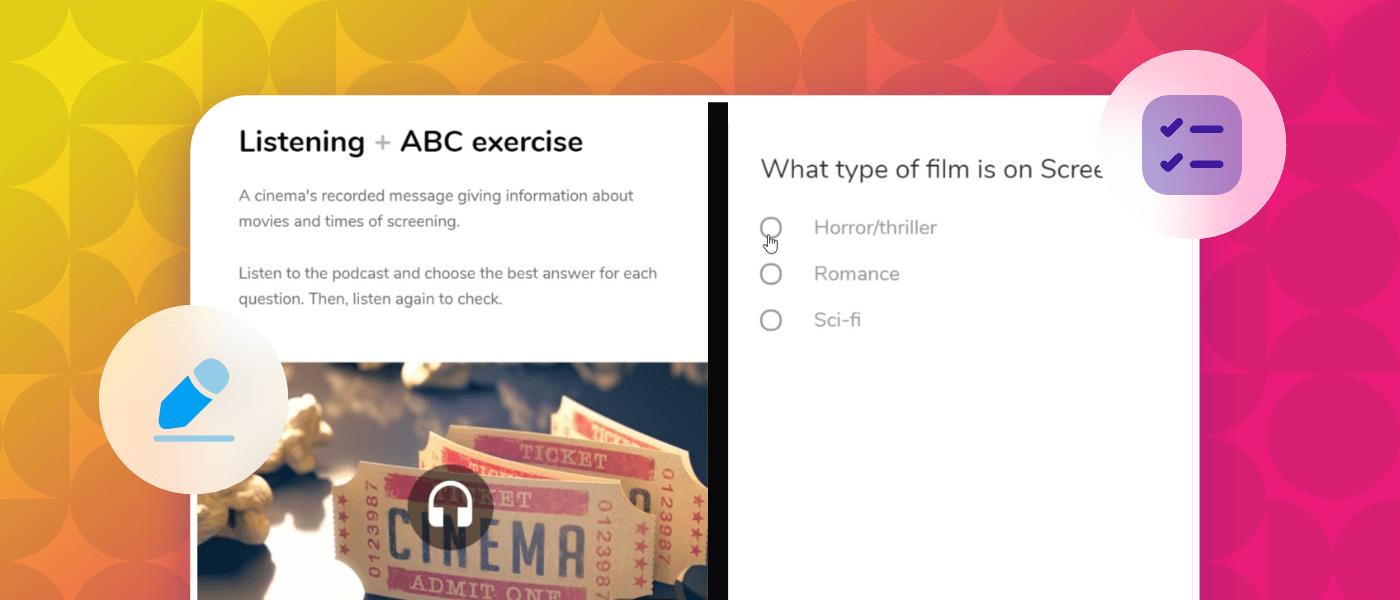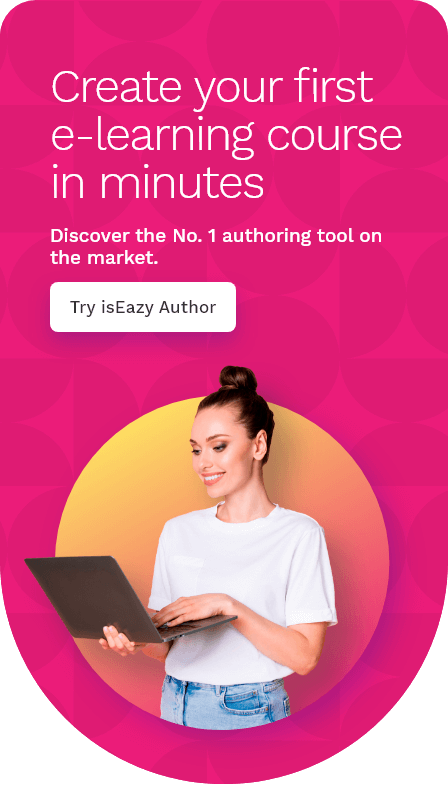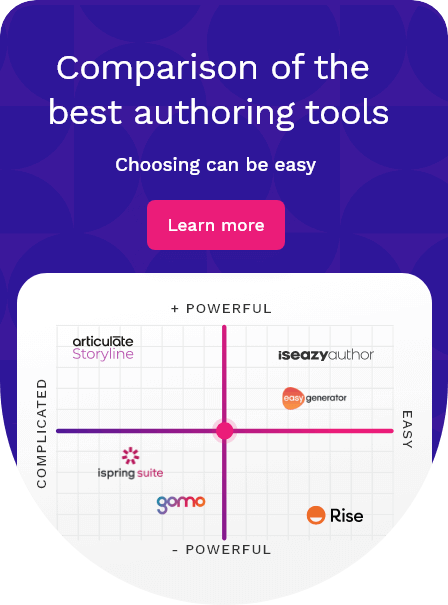Table of contents
ToggleMore and more flexibility and adaptability are needed when developing content for better online training. Authoring tools should allow the creation of more attractive and engaging interactive self-assessments because the training and learning needs are different for each organization.
That’s why the creation of assessment in authoring tools must be versatile and allow using different interactive resources to meet training objectives. In today’s article, we’ll discuss the exercises you can use to create self-assessments, how to use them and the benefits for employee development.
Technology-Enhanced Items
Technology-enhanced items are items programmed in code that enable interaction and data collection. These items include single or multiple-choice questions, drag, fill or sort exercises, or other more complex activities with simulations and questions.
The most modern authoring tools include a wide range of question exercises that you can combine with simple, multimedia, or interactive resources to create a complete assessment in e-learning. The technology has adapted the new online training programs, allowing different companies or educational centers to fulfill their learning needs smoothly.
Types of assessment in authoring tools
Creating self-assessments for more complex topics such as data protection or cybersecurity is not the same as creating self-assessments for personal well-being and development. You should know the types of exercises that an authoring tool offers in order to create the best reinforcement activities:
Simple or multiple-choice question exercises
These exercises are similar to test questions, most commonly used for theoretical evaluations. The simple answer mode has only one answer as correct, while the MCQ will have several answers as accurate, and the learner will only get it right if he selects all the right choices. At the end of the self-assessment, the learners will have feedback on how many responses they got right and the possibility of repeating as many times as they want.
Sort exercises
It is a more visual exercise because it uses images and text. It works by relating one row of concepts to another. It is as simple as the student dragging the answer to the desired block.
Fill-the-blank exercises
It’s perfect for activating cognitive processes of remembering and comprehending. It consists of completing the blank spaces of a text related to concepts seen in the course. Typically, the learner fills the blank in these exercises by choosing the correct answer from a drop-down list or can write the text directly.
Match exercises
Similar to sort exercises because of their visual appearance and the possibility of using text and images, these exercises connect concepts from one group to another.
The student must click on one idea and relate it to a second one. If it’s right, it’ll turn green and red if wrong. The final score shows how many concepts they matched correctly on the first try.
Arrange exercises
In this self-assessment, the student must correctly arrange a list of answers. It’s helpful to remember processes because, with practice, knowledge retention is more outstanding. It works by changing the position of sentences by dragging them or clicking the arrow.
Self-assessments give the students a final grade and offer the possibility of repeating the exercise to improve the score. Usually, the points reflect how many answers students got on the first try, and the purpose is to encourage students to repeat the exercise. Some assessments even allow the option to add feedback to enhance knowledge retention.
Why create your self-assessments with an authoring tool?
All companies have specific needs for talent development, and all learning processes are different. A good authoring tool should allow trainers to create self-assessments using the combination of exercises and multimedia resources needed to meet their training objectives, like:
- Video + exercise
- Podcast + exercise
- Infographic + exercise
- Text + exercise
- Image + exercise
With the variety of assessments that an authoring tool allows, students will reinforce learning, and training will be more effective. It’s essential to do a final evaluation test that gathers information and monitors students’ progress to improve aspects of the training necessary for the future. The best authoring tools allow you to use multiple exercises and create a final evaluation easily and intuitively.
isEazy Author: create assessments with an intuitive authoring tool!
isEazy Author‘s assessment builders allow you to design comprehensive training that fits your company’s needs. Combine the different exercises with various interactive resources, create a final test, gather the results and optimize your online training program. Design richer learning experiences with our authoring tool. Don’t know it yet? Try for free the nº1 authoring tool on the market.












